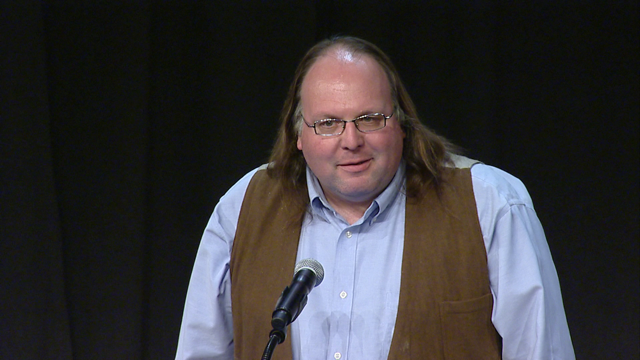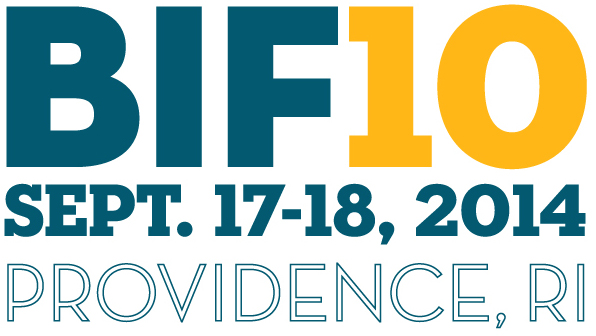

This is the second of a 10-article series of conversations with transformational leaders who will be storytellers at theBIF10 Collaborative Innovation Summit in Providence, RI, on Sept. 17-18.
Ethan Zuckerman’s job is to see the Internet for what it is.
As the director of the MIT Center for Civic Media and the author of Rewire: Digital Cosmopolitans in the Age of Connection, Zuckerman studies civic engagement within digital infrastructures. He has made the case that we are not as connected as we appear to be.
Zuckerman’s research explodes what he calls the “myth of connectivity.” As he claims, “The world is more global. Our problems and economics are global. And though we are inundated with content, the media is getting less global.”
He believes it is important to expose and rectify this fallacy; after all, “this leads not only to shocking ignorance about the world, but also to missed opportunities for marketing and collaboration.”
As it turns out, Zuckerman says, “What you don’t know can hurt you.”
+++
“Atoms are more accessible than bits in many occasions,” Zuckerman says. “Fijian water is easy to access, but Fijian culture is not.”
He attributes the myth of connectivity to a lack of demand rather than too much supply. With the explosion of personal publishing and the “read-write web,” the issue isn’t so much the lack of stories told from other parts of the world, but rather, that these stories have been filtered out by the American attention span.
One of the problems of “free market journalism,” Zuckerman says, is that it relies on user behavior to recommend content. This filtering mechanism is deeply susceptible to what he calls “homophily.” Meaning “love of the same,” the concept is also known by the truism “birds of a feather flock together.”
Homophily explains the tendency of news coverage to cater to the lowest common denominator, or, speaking within the realms of Zuckerman’s research, of the disappearance of international or investigative reporting.
“What we need are new systems to help us stumble over things, to jog us out of ordinary reality,” Zuckerman says.
Zuckerman claims the key to integrating international or hard-hitting perspectives into domestic discourse is to provide relevant context. Fundamentally, he says, “What’s most important to you, is ‘you’ and ‘yours.’ If we’re not giving people some way in which they can interact with content, we’ll be missing giant opportunities.”
He forecasts that content recommendations of the future will be able to determine an audience’s interest and the “information rut” that they’re stuck in, before bridging that gap by suggesting novel, yet unexpectedly useful content. For instance, “following your interest in US mobile phones, you might find yourself reading about Chinese phone technologies, or about how much disposable income the mobile market captures in East Africa,” he explains.
+++
“I was never in love with the narrative of the Internet startup,” Zuckerman says.
“Dot com” entrepreneurism did not excite him as much as the question of the Internet’s potential to transform the world.
Yet, for all his reluctance to view enterprises as one-stop fix-its for society’s ills, Zuckerman looks forward to returning to speak at the Collaborative Innovation Summit hosted annually by the nonprofit Business Innovation Factory (BIF) in Providence, RI.
At the Summit, Zuckerman intends engage the BIF community — which he knows to be composed of unconventional tinkerers and seasoned social entrepreneurs — with a critical question he has been wrestling with: how to innovate journalism.
The BIF Summit has been a site of meaningful connections for Zuckerman in the past. He recalls meeting his MIT colleague Neri Oxman there, and marveling, from her talk about her first encounter with snow, Oxman’s intuitive thought process as a materials scientist.
“What I value so much about BIF is this notion that you’re not there to give a presentation, but to tell a story,” Zuckerman says, “With stories, the interesting motivations are never completely rational. That irrationality, that underlying passion, is to me what’s fascinating about anybody who’s trying to change the world.”
He believes that in BIF’s passionate community, he will find a receptive audience. “Storytelling is hugely underrated as a form of human communication,” he says, “It’s really hard to make money while doing good, investigative journalism, but that doesn’t mean it’s not worth doing.”
“Ultimately, I think we need to be having a deeper conversation about what public goods we should be willing to pay for, that the market isn’t good at provisioning,” Zuckerman says. He recognizes, “Those tend to be fighting words in the United States, but I think this notion of having really high-quality information is something that we’re not talking seriously enough about.”
The BIF Collaborative Innovation Summit combines 30 brilliant storytellers with more than 400 innovation junkies in a two-day storytelling jam, featuring tales of personal discovery and transformation that spark real connection and “random collisions of unusual suspects.”
Saul Kaplan is the author of The Business Model Innovation Factory. He is the founder and chief catalyst of the Business Innovation Factory (BIF) in Providence and blogs regularly at It’s Saul Connected. Follow him on Twitter at @skap5. Nicha Ratana is a senior pursuing a degree in English Nonfiction Writing at Brown University and an intern at The Business Innovation Factory. Follow her on Twitter at @nicharatana.
More Must-Reads from TIME
- Cybersecurity Experts Are Sounding the Alarm on DOGE
- Meet the 2025 Women of the Year
- The Harsh Truth About Disability Inclusion
- Why Do More Young Adults Have Cancer?
- Colman Domingo Leads With Radical Love
- How to Get Better at Doing Things Alone
- Michelle Zauner Stares Down the Darkness
Contact us at letters@time.com